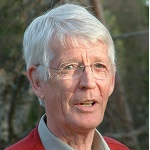Future Forests
A special issue of Forests (ISSN 1999-4907).
Deadline for manuscript submissions: closed (30 November 2010) | Viewed by 155482
Special Issue Editors
Interests: ecophysiology; long-term manipulation experiments; carbon and nutrient dynamics; forest production; impacts of climate change
Interests: sustainable uses of natural resources; climate change effects on vegetation
Special Issue Information
Dear Colleagues,
Climate change, globalization, and the growing consumption of energy and raw materials are placing increasing demands on our forest resources.
The challenge for the future is to make forests meet all our varied needs. This may require an upscaling of the forestry industry to extract more fiber and energy while at the same time safeguard biodiversity, recreational needs, and ecosystem services. A daunting task indeed. To achieve this, we believe that policy makers will require scientific analyses of consequences of different trade-offs. The research program Future Forests will attempt to provide this for boreal forests in general and for Swedish forests in particular. The program consists of researchers from many different disciplines within the natural and social sciences, and the humanities. We attempt to work both interdisciplinary and in close connection with our stakeholders. The papers in this special issue will together show a sample of the research questions that the program has addressed during our initial phase. For more information on the program, please visit our website www.futureforests.se.
Prof. Dr. Sune Linder
Prof. Dr. Jon Moen
Guest Editors
Keywords
- boreal forest
- biodiversity
- bioenergy
- forestry
- land use conflicts
- sustainability
- trade-offs






